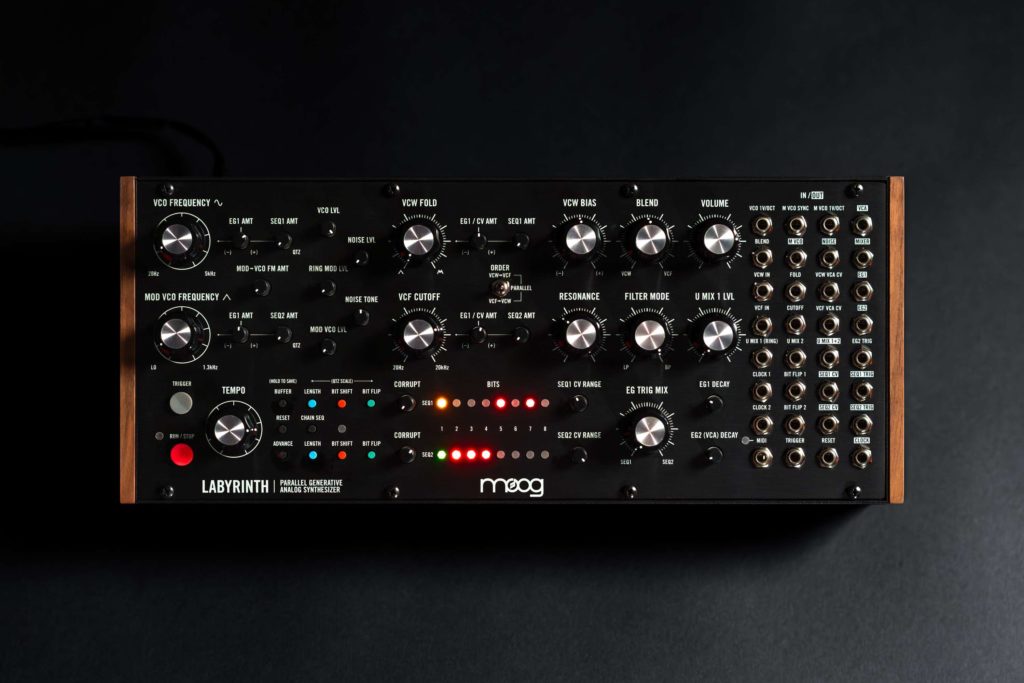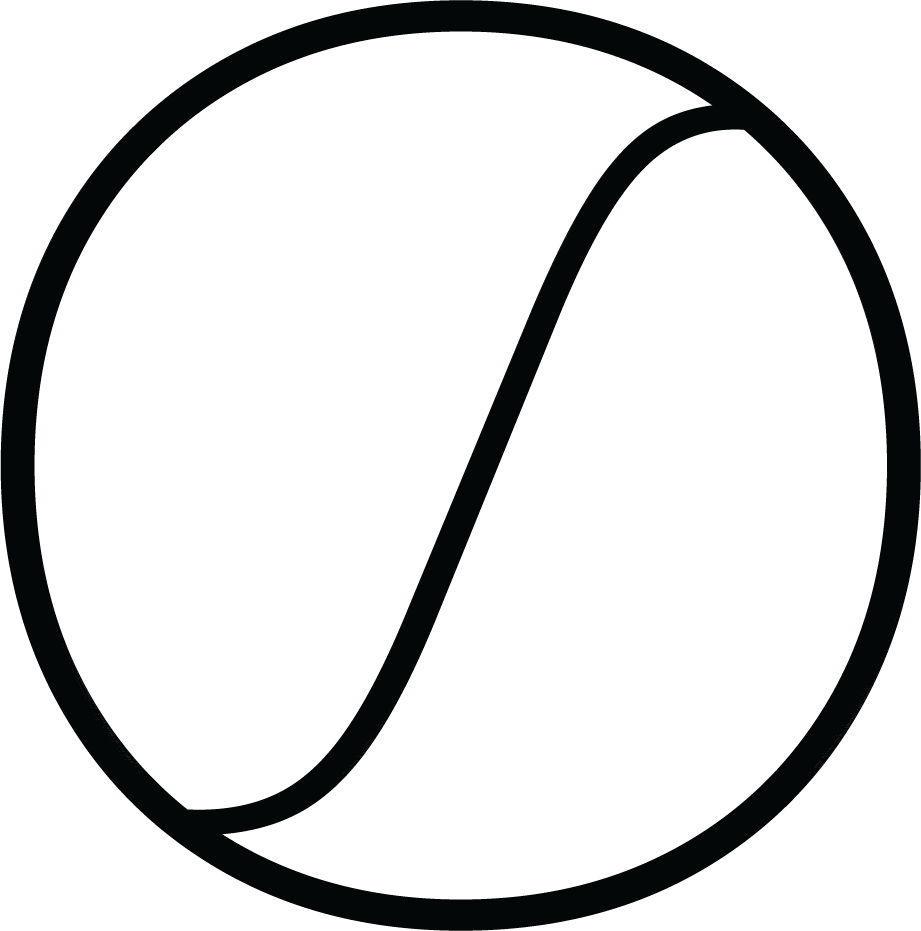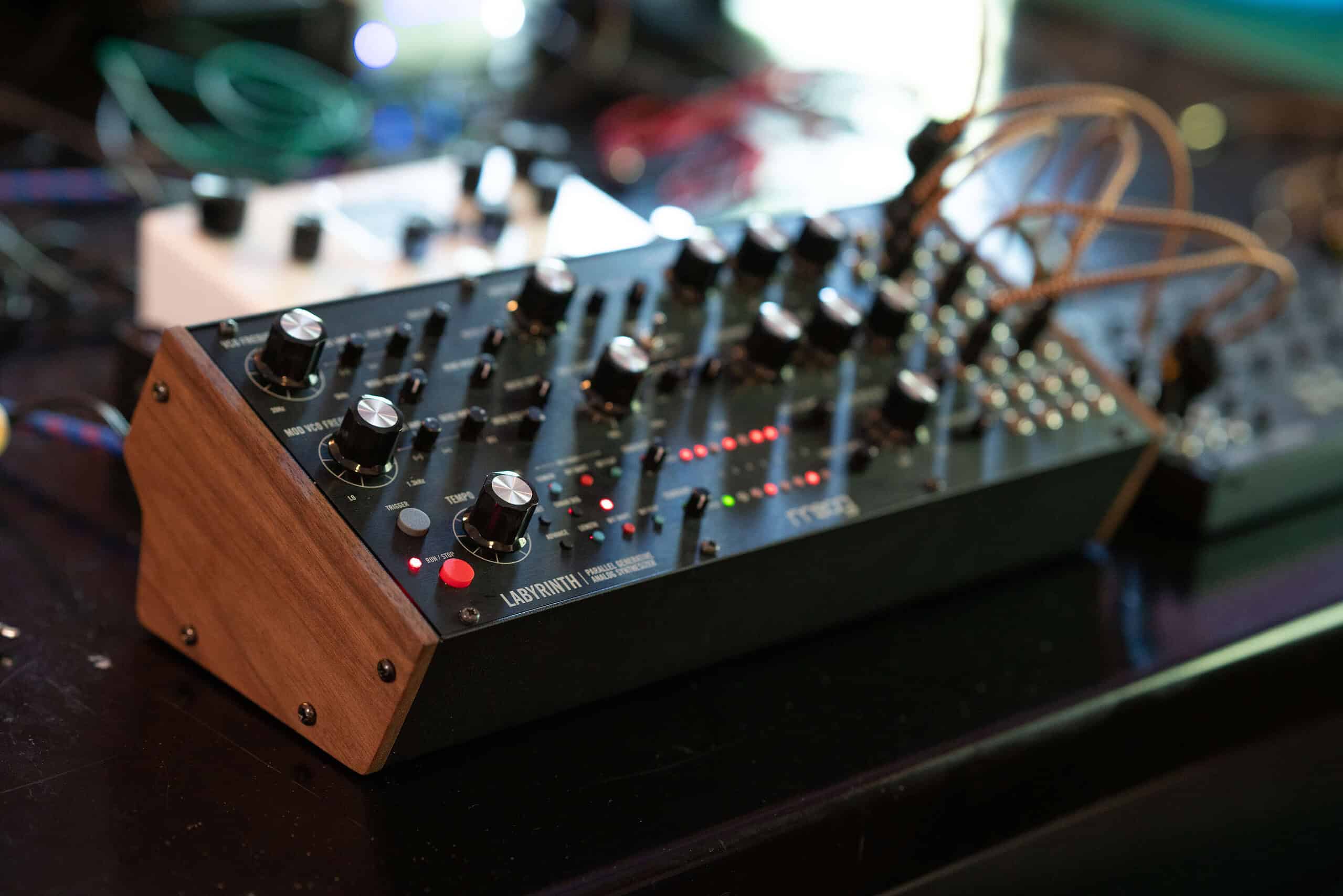Departing from traditional Moog instruments, Labyrinth introduces a new voice architecture with unique oscillators, a different filter topology, wavefolding, and parallel processing. This innovative design also features unique dual intertwining generative sequencers to help inspire new compositional ideas.
As part of Moog’s semi-modular family, Labyrinth stands out as a unique tool for auditory exploration. Its dual generative sequencers and parallel voice architecture enable the creation of evolving soundscapes and intricate polymetric melodies. More than just an instrument, Labyrinth is an idea machine, offering limitless sonic potential that adapts to both live performances and studio sessions.
In a compact 60HP format, Labyrinth excels both as a standalone synthesizer and an integral part of larger Eurorack setups. Its flexible architecture allows musicians to add color and depth to any musical arrangement, from ambient soundscapes to dynamic rhythmic patterns. The instrument’s patch bay facilitates extensive modulation and connectivity with other modular gear, making it a versatile addition to any setup.
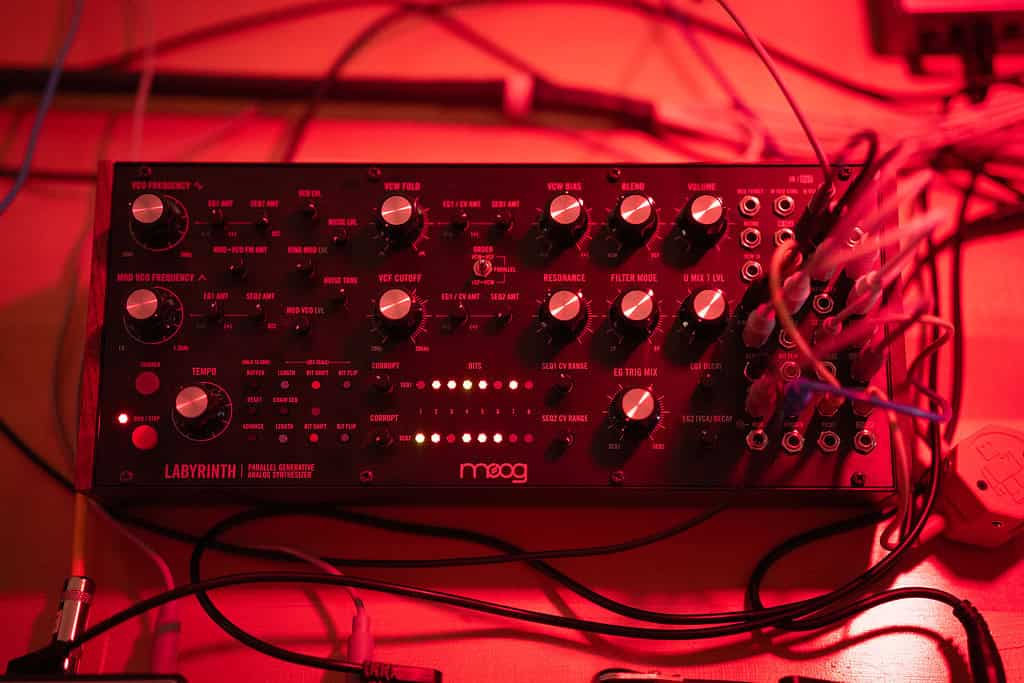
From Percussive Inspiration to Generative Innovation
Inspired by classic percussion synthesizers and modern generative techniques, Labyrinth combines a newly designed voltage-controlled wavefolder with a state-variable filter, allowing for both additive and subtractive synthesis. This approach enables users to create rich, evolving textures and dynamic sequences. The dual sequencers, inspired by shift register sequences commonly found in Eurorack systems, offer intuitive and flexible control over melodic and rhythmic patterns.
“Labyrinth is designed to be an engine of sonic exploration. It allows users to create evolving sequences and rich timbres. It’s like having a compositional companion that navigates through a labyrinth of sound, constantly reconfiguring and surprising you with new sonic landscapes,” says Moog’s Rick Carl, System Architect and Lead Hardware Engineer on Labyrinth.
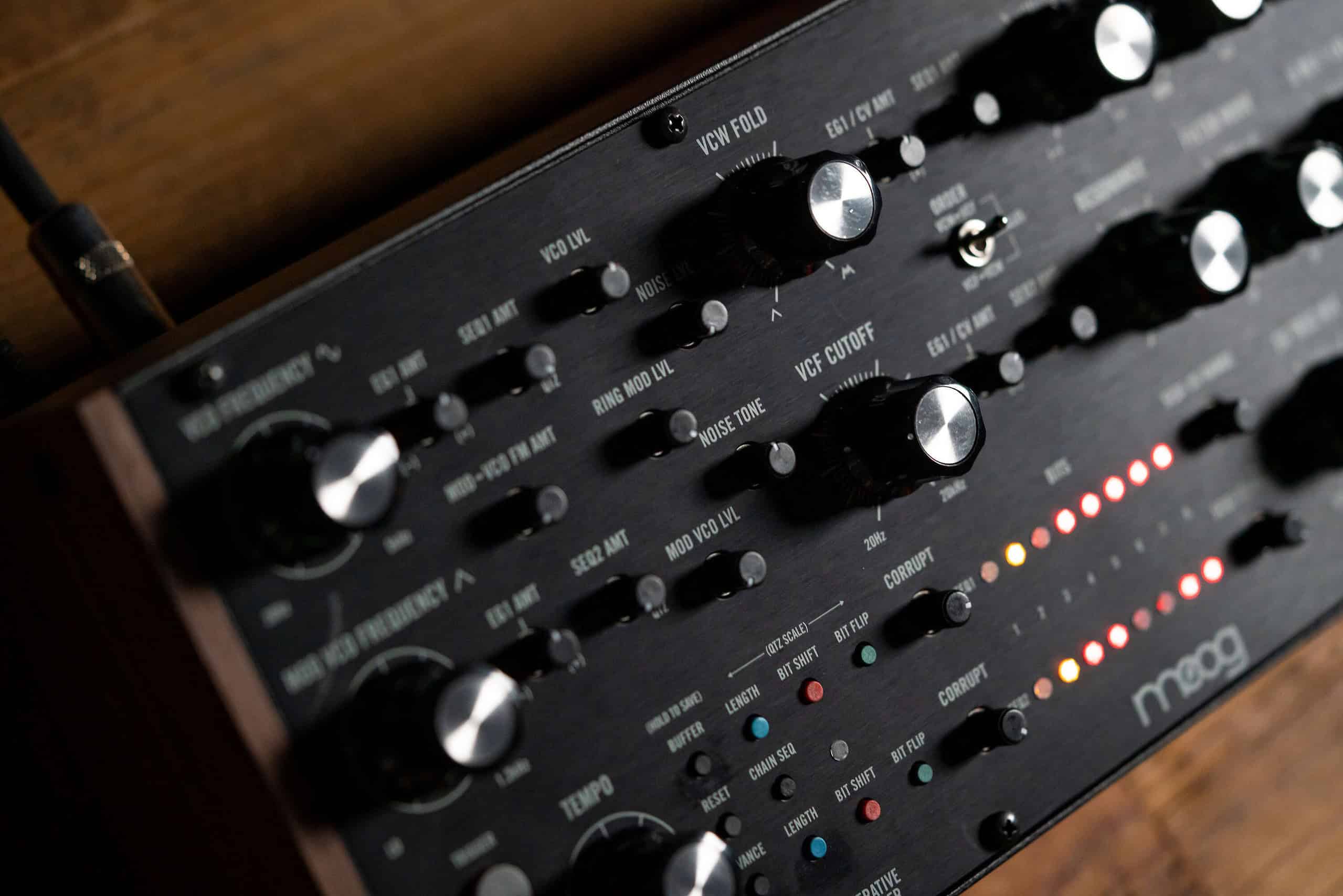
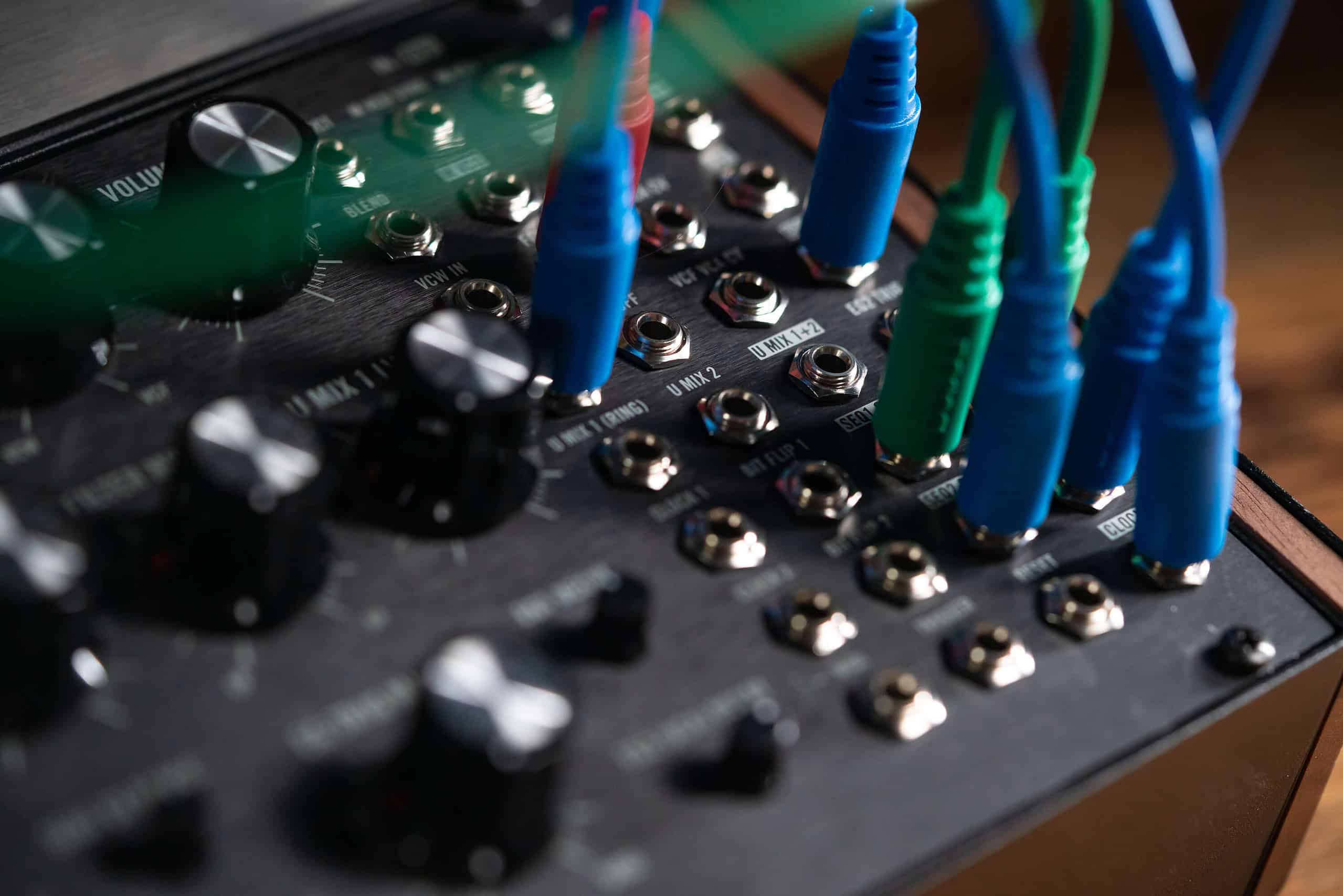
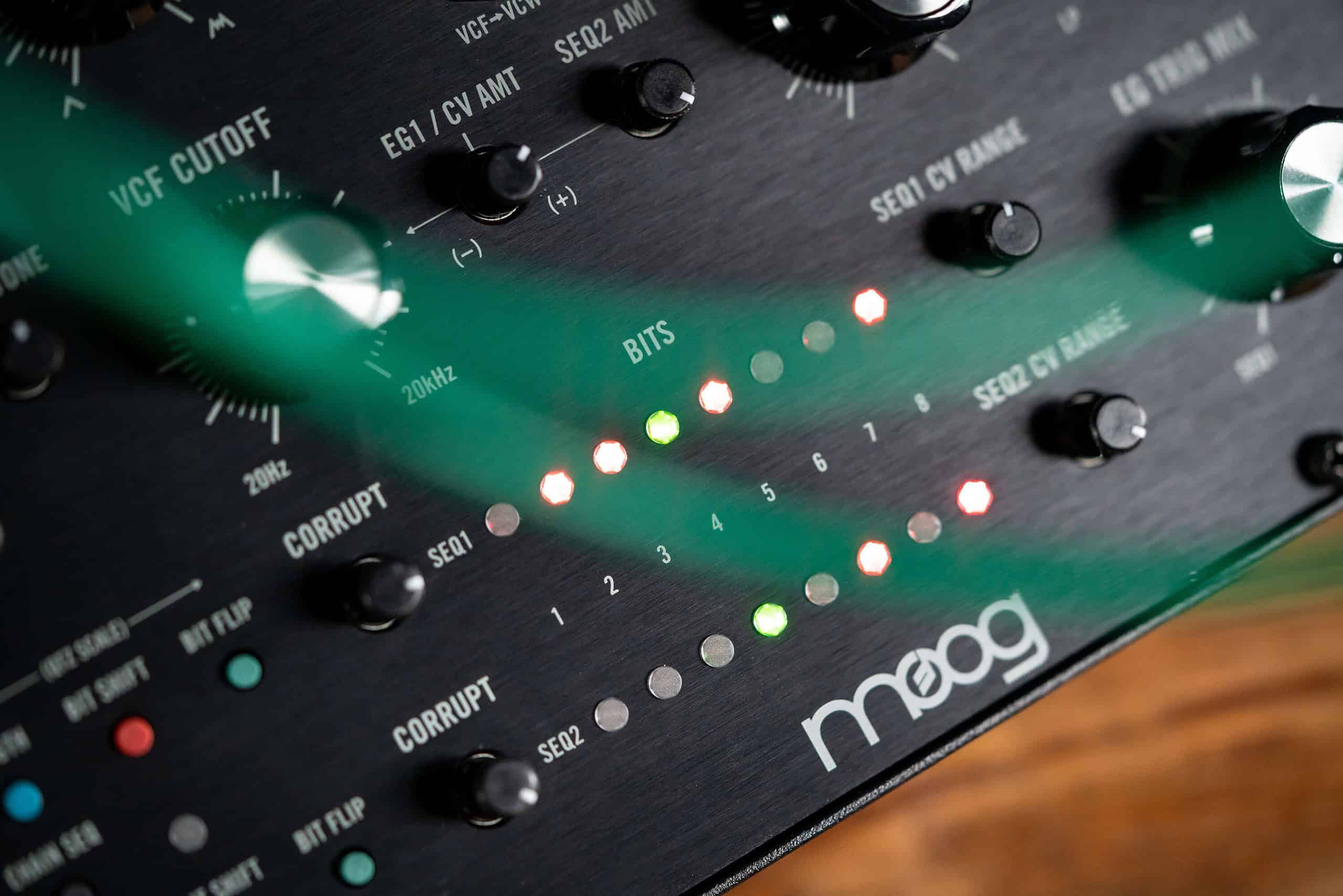
Enter the Moog Labyrinth
Step inside the sonic hall of mirrors of Labyrinth with four distinctive electronic artists. These compositions were written and performed inside each artist’s personal creative space, demonstrating how they use Labyrinth as part of their larger production setups. Follow Satoshi Tomiie, Antenes, Keith Fullerton Whitman, and Gladstone Deluxe down the rabbit hole as they explore the endlessly forking paths of Labyrinth.
How Deep Does the Rabbit Hole Go?
Labyrinth, a semi-modular instrument and idea machine, discovers patterns, layers, and textures both familiar and unheard. Two generative sequencers bring to life sounds that bloom over time, letting you control their evolution and scale, then play them off of each other for striking polymetric melodies. With parallel analog signal paths, this unique instrument shines when adding color to the static backdrop of a drum pattern or bassline. Fully capable of standing on its own, or adding depth to your existing rack, it’s equally at home in a live set or at the center of a humble bedroom studio. Labyrinth is the lightning in a bottle that drives a studio session deeper into undiscovered creative caverns.
Twist and Curve Through a Winding Path of Sound
The beating heart of Labyrinth is a robust dual sequencer, which uses chance operations to construct two unique eight-step paths which twist and curve around each other, forming a mesmerizing path of sound. With a comprehensive patch bay, Labyrinth can be synced via analog clock or MIDI while processing, directing, and being influenced by other kit.
Creative Patching Possibilities for Performance
Tune your instruments together and let Labyrinth improvise alongside in key while you play Matriarch. Patch Labyrinth and Spectravox together for animated spectral movement. Combine Labyrinth with Mavis in a 104HP rack for expanded modularity. These are just a handful of many playful setups where Labyrinth fits. Whichever path you choose, have Labyrinth guide you.
Key Features
- Sine wave oscillators, ring modulators, through-zero FM, and saturating mixers give Labyrinth an unconventional yet classic Moog sound
- A diode-transistor hybrid wavefolder that sounds surprisingly smooth
- A state-variable filter provides a new twist on the Moog sound, morphing from lowpass to bandpass
- Creative patching possibilities for performance alongside other instruments
- An infinite spiral of percussive or melodic sequences that bloom over time
